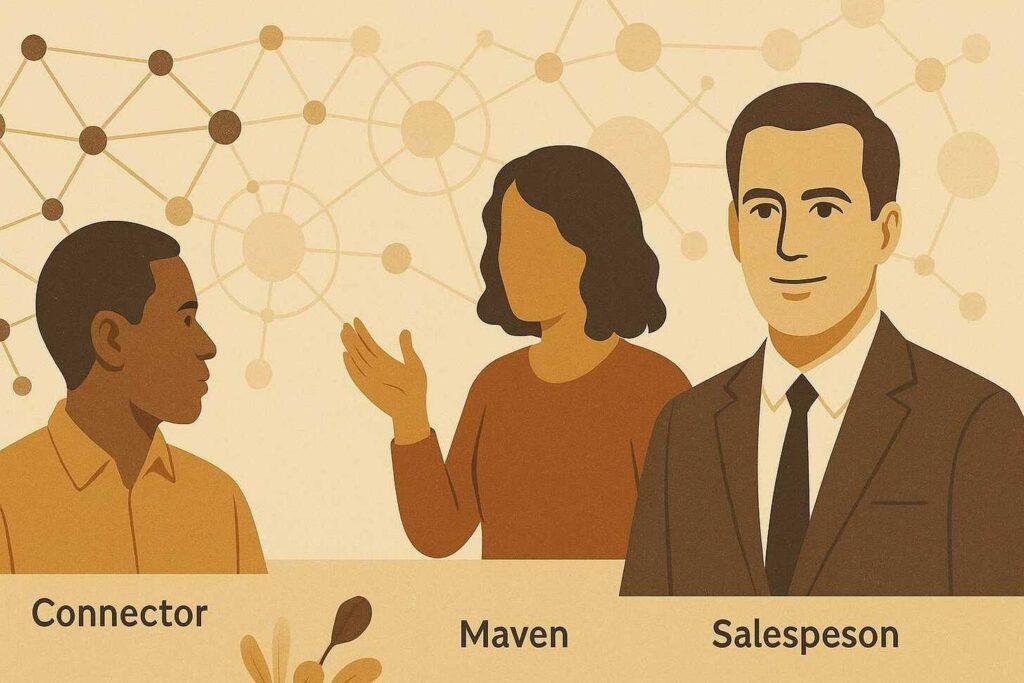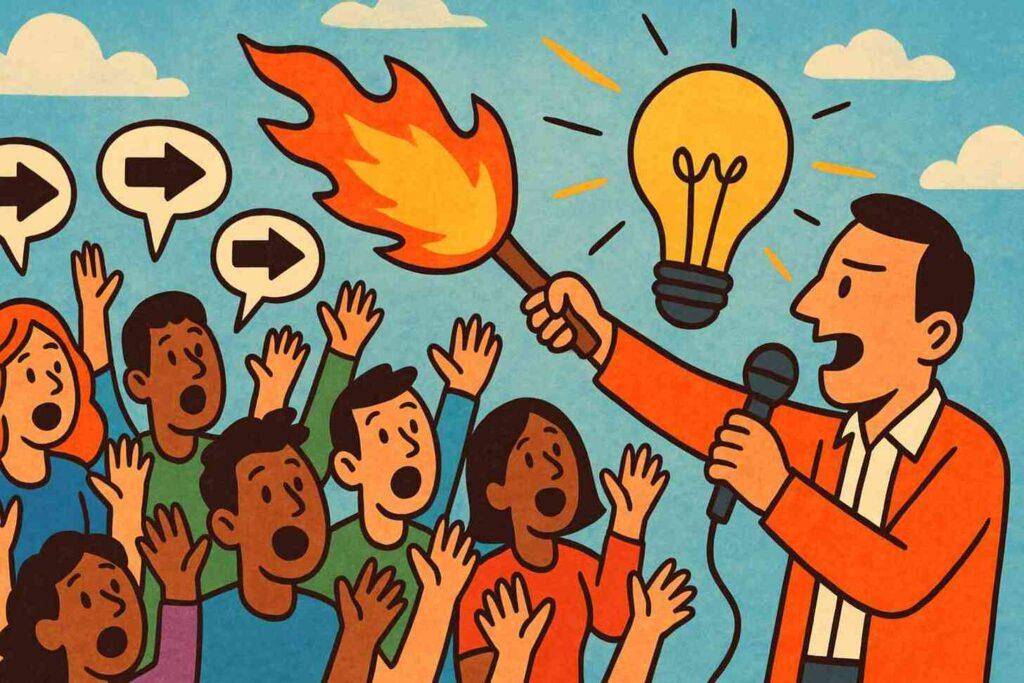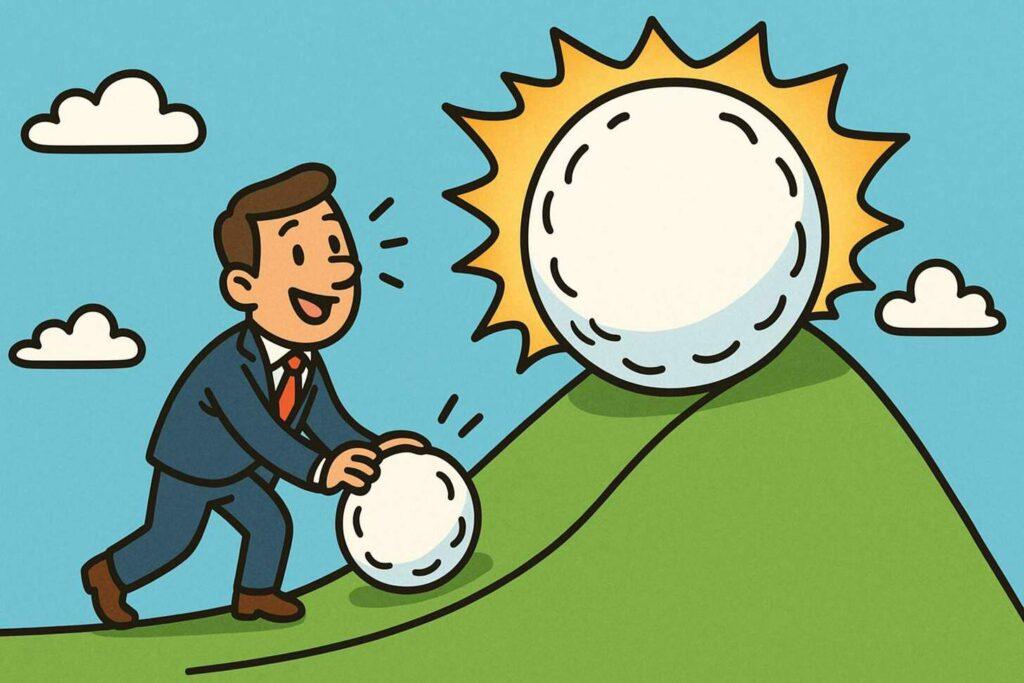Ever wonder why some ideas explode overnight while others fizzle out? The tipping point mental model reveals how small actions can snowball into massive change. Like a single spark starting a wildfire, this concept shows how reaching critical mass transforms slow progress into sudden breakthroughs.
Think about viral trends or social movements. They don’t happen by accident. Tiny shifts—like a catchy slogan or a passionate influencer—pile up until they hit a threshold. Then, everything changes fast. This pattern explains everything from why diets fail (until one habit sticks) to how startups go from unknown to unstoppable.
But how does it work? According to research from UCLA, three rules drive these shifts: the right people spreading ideas, messages that stick, and environments that fuel change. Together, they create the “perfect storm” for transformation.
In this article, you’ll learn to spot these patterns in your own life. Whether you’re launching a product or breaking a bad habit, understanding this framework helps you predict—and even trigger—meaningful shifts.
Key Takeaways
- Tipping point mental model: Small, consistent actions often create dramatic change once they reach a critical threshold.
- Ideas spread fastest through trusted influencers, memorable messaging, and supportive environments.
- This model applies to personal growth, business trends, and even societal revolutions.
- Recognizing early signals helps you prepare for—or accelerate—major shifts.
- Real-world examples range from viral content to historical political uprisings.
Introduction to the Tipping Point Mental Model
Remember when a local issue suddenly became everyone’s concern? That’s critical mass in action—the invisible tipping point where small actions create irreversible change over time.
Like dominos falling after the first push, this principle explains how ideas spread from whispers to widespread movements, adding significant value to collective awareness.
Consider your workplace. Maybe a new policy gained traction after a few vocal supporters backed it. Or think about fashion trends—one influencer wears neon socks, and suddenly they’re everywhere. These aren’t random events. They follow patterns explained by the critical mass framework.
Three elements drive these shifts:
| Element | Everyday Example | Large-Scale Impact |
|---|---|---|
| People | A coworker sharing a productivity hack | Tech adoption in entire industries |
| Message | Catchy slogan at a school fundraiser | Global climate change campaigns |
| Environment | Remote work tools during a snowstorm | Pandemic-driven digital transformation |
Notice how seemingly minor factors combine to create major shifts. A viral TikTok dance starts with one creator. A neighborhood recycling program succeeds after 30% participation, reaching a tipping point. These thresholds matter because they help us predict—and sometimes trigger—change.
Why does this matter for you? Recognizing these patterns turns chaos into strategy.
Whether launching an app or improving team morale, understanding critical thresholds lets you invest efforts where they’ll have maximum impact in the right place, ensuring you engage the majority.
History and Malcolm Gladwell’s Influence

In 2000, a book changed how we view social trends forever. Malcolm Gladwell’s The Tipping Point didn’t invent the concept of sudden change, but it gave us a roadmap for understanding why ideas catch fire. By framing cultural shifts as “social epidemics,” he showed how behaviors spread like viruses—starting small before reaching explosive growth.
The Origins and Popularization of Social Epidemics
Gladwell’s genius was making complex sociology relatable. He compared idea transmission to disease outbreaks, highlighting three key roles: Connectors, Mavens, and Salespeople. These roles are crucial in understanding how change occurs and how people address problems.
Ever noticed how some coworkers shape office culture more than others? That’s these groups in action, helping ideas reach critical mass and demonstrating the theory that social dynamics reach critical mass through effective communication.
The Role of Connectors, Mavens, and Salespeople
Connectors are your friends who know everyone. They bridge social circles, making them ideal for spreading concepts across groups. Mavens dive deep into details—think of that cousin who researches every phone model before family tech purchases. Salespeople persuade with charm, turning “maybe” into “yes” at crucial moments.
Together, these roles create momentum. A Maven shares trustworthy info, a Connector spreads it widely, and a Salesperson seals the deal. Gladwell’s framework works because it mirrors real life—like how a neighborhood barbecue recipe becomes a city-wide food trend through the right mix of enthusiasts and talkers.
People, Stickiness, and Context

Why do some slogans stay in your head for days while others vanish instantly? The secret lies in three ingredients that turn ordinary ideas into cultural earthquakes. Like a recipe needing flour, heat, and timing, successful shifts require the right people, messages that cling, and environments ready for change.
Understanding the ‘Stickiness Factor’
Think of the last ad you couldn’t forget. Maybe it rhymed, used bright colors, or made you laugh. That’s stickiness—the magic that makes ideas burrow into minds. Take the “Dumb Ways to Die” safety campaign. Its playful animation and catchy tune made serious topics memorable, reducing railway accidents by 21%.
Not all messages stick equally. Compare these examples:
| Component | Weak Example | Strong Example |
|---|---|---|
| People | Random social media shares | Teachers using a new math app |
| Message | “Save energy” poster | “Earth Hour” global lights-out event |
| Context | Diet app launch in December | Fitness challenge starting January 1st |
See how environment shapes success? A productivity tool might flop in a relaxed office but thrive in a deadline-driven team. Even brilliant ideas need the right soil to grow.
Want your next project to gain traction? Ask: Who cares deeply about this? Does it solve a real pain point? Is the timing ripe? Nail these, and you’ll watch small efforts reach critical mass faster than you expect.
Critical Mass and Activation Energy

Why do some changes feel impossible until they suddenly aren’t? The answer lies in two powerful concepts from science that shape how shifts happen. Like lighting a match to start a bonfire, these principles explain why transformations often surprise us with their speed.
Critical Mass in Physics and Sociology
In nuclear physics, scientists discovered that uranium needs a specific amount—called critical mass—to create chain reactions. Too little, and nothing happens.
Enough material? Boom—self-sustaining energy bursts forth, reaching critical mass. This concept parallels the tipping point mental model in social dynamics, where methods of adoption can lead to mass tipping.
Sociologists saw similar patterns in human behavior. When 25% of a population adopts a new idea, it often spreads rapidly. This explains why workplace policies or fashion trends suddenly “click” after months of slow growth, as they align with mental models that facilitate change.
| Physics | Sociology |
|---|---|
| Uranium atoms | Early adopters |
| Fission reaction | Social movement |
| Chain reaction threshold | 30% participation rule |
Activation Energy and the Threshold Effect
Ever notice how starting a project feels hardest at first? That’s activation energy—the initial effort needed to kickstart any process.
Just like heating water to boiling point, early investments create momentum, especially when a certain number of people engage with the idea.
Consider these examples:
- A gym membership surge every January
- Crowdfunding campaigns hitting 80% funding
Both show the threshold effect—crossing a line where efforts become self-fueling, often seen at the tipping point where a small change leads to significant outcomes. Add one more team member or customer, and suddenly growth accelerates.
Science proves what successful leaders know: persistence before reaching critical mass pays off exponentially, aligning with the Pareto principle that emphasizes the importance of focusing on key contributors to success.
Real-World Examples and Case Studies
What do shoes, payment apps, and ghost stories have in common? They all show how reaching critical mass creates unstoppable momentum. Let’s explore three surprising examples where small shifts led to massive exponential growth.
The Hush Puppies Surge: A Fashion Phenomenon
In 1994, Hush Puppies were nearly extinct—selling just 30,000 pairs yearly. Then, something changed. A handful of trendy artists in Manhattan started wearing the retro shoes. By 1995, sales exploded to 430,000 pairs.
Why? Early adopters created a ripple effect that made the brand cool again, demonstrating how people can influence change as a brand reaches critical mass.
PayPal took a different approach. They offered $10 cash for signing up and $10 more per referral. This incentive helped them hit 1 million users in months.
Their secret? Understanding that payment platforms become more useful as the number of users grows—a classic network effect, especially as more people would make decisions based on the platform’s popularity.
| Example | Key Driver | Growth Rate |
|---|---|---|
| Hush Puppies | Fashion influencers | 1,333% increase |
| PayPal | Referral incentives | 10x user growth |
| Urban Legends | Social media shares | 100x faster spread |
Ever shared a spooky story that spread like wildfire? Urban legends thrive once they reach a critical mass of believers. Before the internet, these tales spread through whispers. Now, TikTok and Twitter can turn local myths into global sensations overnight.
These examples share a pattern: early efforts feel slow until they hit a threshold. Whether reviving shoes or building apps, success often comes down to recognizing—and pushing toward—that magic number where growth becomes automatic.
Crime Reduction and Social Revolutions

How does graffiti cleanup lead to safer streets? Or a few student protests spark nationwide movements? These transformations begin when small actions reach critical mass, creating unstoppable momentum for change.
Case Studies: New York City and the Arab Spring
In the 1990s, New York City cut crime rates by 40% using the “Broken Windows” approach. Instead of tackling major crimes first, they fixed broken streetlights and cleaned subway graffiti. This created visible order—a signal that someone cared. Soon, neighborhoods that felt hopeless became safer as people regained trust in their community.
The Arab Spring shows how courage spreads. When a Tunisian street vendor set himself on fire in 2010, it wasn’t just one tragic event. His act became a rallying cry. Protests erupted across 20 countries because the group of initial demonstrators reached critical mass. Governments fell as society realized their collective power.
| Case Study | Trigger | Outcome |
|---|---|---|
| NYC Crime Drop | Fixing small signs of disorder | 40% fewer felonies in 7 years |
| Arab Spring | Single protest in Tunisia | 4 governments overthrown |
| Beijing 1989 | Student hunger strike | 300+ cities joined protests |
Why do authorities fear small gatherings? Because when people see others taking a stand, it chips away at fear. Like dominos, each new participant makes the next person likelier to join. That’s how a handful of marchers becomes a sea of voices demanding change.
These events teach us an important lesson: Lasting transformation starts long before headlines notice. Whether cleaning parks or sharing petitions, your actions matter most when they help critical mass take shape.
The Role of Influencers and Communication

Why do some messages go viral while others get ignored? The secret lies in strategic communication that turns abstract ideas into shared actions among people. Like a well-timed spark, the right words from trusted voices can ignite widespread change and create crucial tipping points.
Modern creators blend three powerful roles: They gather audiences (Connectors), build expertise (Mavens), and persuade effectively (Salespeople).
A tech reviewer demonstrating a new app does all three—explaining features, showing real-world use, and convincing a number of people to try it, contributing to a mass tipping effect.
Messaging Strategies and the ‘Stickiness’ of Ideas
Compare these approaches to health guidelines:
| Approach | Message | Result |
|---|---|---|
| Fear-Based | “Smoking kills 480,000 Americans yearly” | 17% quit attempts |
| Empowerment | “Quit smoking, add 10 years to your life” | 34% quit attempts |
The “Stay Home. Stay Safe. Save Lives.” campaign worked because it linked personal safety to community good. People felt like heroes, not prisoners. This nudging method works better than strict rules—it guides choices without force.
Effective communicators target specific groups first. A fitness app might focus on busy parents needing 15-minute workouts rather than general audiences. Early adopters then spread the idea, building critical mass through word-of-mouth.
Want your next project to gain traction? Frame messages around what people value—time savings, social approval, or personal growth. Make it easy to share, and watch small efforts reach the threshold where momentum takes over.
Business and Innovation Strategies

Business success often hinges on knowing when small efforts will snowball into big results. Startups and established companies alike use the critical mass principle to turn gradual progress into market dominance. It’s like watching a snowball grow as it rolls downhill—the right push at the perfect moment creates unstoppable momentum.
Tipping Point Mental Model: Scaling Through Strategic Growth
Consider how messaging apps become essential once enough friends join. A startup’s first 100 loyal users matter more than 10,000 casual ones. These early adopters become ambassadors, naturally attracting others. Slack mastered this by targeting tech teams first—once departments adopted it, entire companies followed.
| Strategy | Early Focus | Growth Trigger |
|---|---|---|
| Network Effects | User-to-user value | 20% market penetration |
| Referral Systems | Incentivized sharing | 5% monthly viral growth |
| Niche Domination | Specific user needs | 80% retention rate |
Marketplaces like Etsy show how critical mass works both ways. Enough sellers attract buyers, which draws more sellers. It’s a self-fueling cycle that begins with focused community building. The key? Identify your “make-or-break” metric—whether it’s daily active users or transaction volume—and relentlessly push toward that threshold.
Smart companies don’t just wait for momentum. They create it through calculated moves: limited-time offers to boost sign-ups, partnerships that expand reach, or features that encourage sharing. Like planting seeds in fertile soil, success grows fastest when conditions align.
Conclusion
The tipping point mental model shows us that big change doesn’t always need big effort—just the right effort at the right time. Whether you’re launching a new idea, leading a team, or starting a movement, success often comes down to reaching that invisible threshold where momentum takes over.
Small actions—shared by the right people, framed in sticky messages, and delivered in the right environment—can spark a chain reaction. Once you understand these patterns, you’re no longer guessing.
You’re working with gravity, not against it.
That’s the power of the tipping point!


